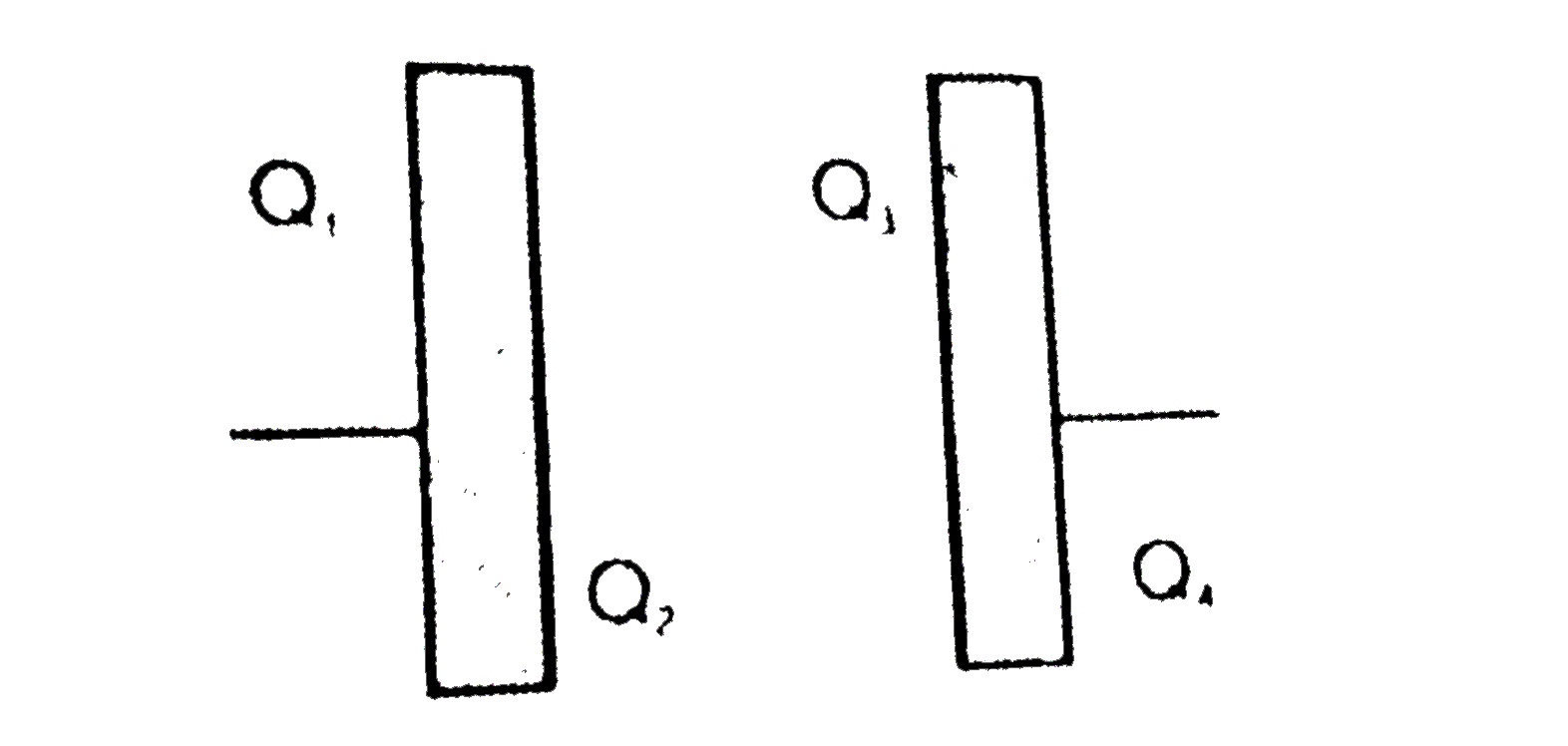A parallel plate capacitor has capacitance C. If the charges of the plates are Q and −3Q, find of the

i. charges at the inner surfaces of the plates
ii. Potential difference between the plates
iii. charge flown if the plates are connected
iv. energy lost by the capacitor in (iii.)
v. charge flown if any plate is earthed.
The charge on surface (ii), q2=Q−(−3Q)2=2Q
 .
.
i. Hence the charges on the inner surfaces are 2Q and −2Q.
ii. V=Charge of capacitorCapacitance=2QC
iii. If the plates are connected, 2Q and −2Q will be neutralized, so 2Q charge will flow the from the left to the right plate.
iv. Energy lost = initial energy stored in capacitor
=(2Q)22C=2Q2C
v. If the left plate is earthed, 2Q charge flows from the ground to the left plate. If the right plate is earthed, 2Q charge flows from the from the ground to right plate.
 .
.
Topper's Solved these Questions
- CAPACITOR AND CAPACITANCEBook:CENGAGE PHYSICSChapter:CAPACITOR AND CAPACITANCEExercise:Solved Examples
Explore 10 Videos
- CAPACITOR AND CAPACITANCEBook:CENGAGE PHYSICSChapter:CAPACITOR AND CAPACITANCEExercise:Exercise 4.1
Explore 13 Videos
- ATOMSBook:CENGAGE PHYSICSChapter:ATOMSExercise:QUESTION BANK
Explore 40 Videos
- CENGAGE PHYSICS DPPBook:CENGAGE PHYSICSChapter:CENGAGE PHYSICS DPPExercise:subjective type
Explore 51 Videos
Similar Questions
For an isolated parallel plate capacitor of capacitance C and potential difference V, what will be change in (i) charge on the plates (ii) potential difference across the plates (iii) electric field between the plates (iv) energy stored in the capacitor, when the distance between the plates is increased ?
View SolutionIn a parallel plate capacitor with plate area A and charge Q, the force on one plate because of the charge on the other is equal to
View Solution
Knowledge Check
A parallel plate capacitor C has a charge Q. The actual charges on its plates are
AQ,QBQ/2, Q/2CQ,-QDQ/2. - Q/2A parallel plate capacitor is charged. If the plates are pulled apart
Athe potential difference increasesBthe capacitance increasesCthe total charge increasesDthe charge and the potential difference remain the sameA parallel plate capacitor of capacitance 1μF has a charge of +2μC on one of the plates and a charge of +4μC on the other. The potential difference developed across the capacitor is
A5VB2VC3VD1V
The force between the plates of a parallel plate capacitor of capacitance C and distance of separation of the plates d with a potential difference V between the plates, is.
View SolutionThe force between the plates of a parallel plate capacitor of capacitance C and distance of separation of the plates d with a potential difference V between the plates, is.
View SolutionIn an isolated parallel plate capacitor of capacitance C the four surfaces have charges Q1,Q2,Q3 and Q4 as shown in the figure. The potential difference between the plates is :

View SolutionElectric potential difference between the positive plate and halfway point between the two parallel plates of a fully charged capacitor is
View SolutionIn an isolated parallel plate capacitor of capacitance C, the plates have charge Q1 and Q2. The potential difference between the plates is
View Solution

